We all know that Global warming is alarming. A couple of years back, you could easily survive with just a fan during the summer. But now, most of the cities in India are suffering from extreme heat.
If you stay in cities like Delhi, Mumbai, Chennai, or Kolkata, then the situation becomes worse. Extreme heat also causes many diseases. I have seen people scramble to avoid heatstroke.
With the advancement of technology, we now have a solution to save ourselves from extreme heat. The solution is an Air Conditioner.
No doubt, natural air is the best relief. But can you expect natural air in metro cities?
No, then why not buy an air conditioner and give ourselves artificial relief?
When it comes to cooling and conditioning the air in your home, you want to make sure that you and your loved ones get the most efficient, environmentally friendly, and cost-effective way to relax and breathe clean and quality air. Right?
If yes, then you should get the Best Air Conditioner in India.
But then there are so many types of AC in the market, and there are so many options and different technical terms. All these things finally confuse us about what to buy and which one is the best.
To get rid of all this confusion, we have brought this ‘AC Buying Guide‘. After reading this guide, you will have enough knowledge to decide which type of AC you should buy, how much tonnage of AC you should buy, and other insights into Air Conditioners.
What Is An AC ( Air Conditioner)
As the name suggests, an AC is a machine that conditions the air. What that means is that it can remove heat or add heat to the air so that it suits your preference.
Often, we have the misconception that AC produces cool air. No, AC can not produce cool air. It just takes the heat away from the air so that you feel cool.
However, a blower in an AC recirculates the cool air that is already present in the room.
The whole concept of this air conditioning is called HVAC ( Heating, Ventilation, and Air Conditioning).
However, ACs in India do not come with a heater. However, in developed countries like the USA or the UK, every AC unit comes with a heater, and that’s why the complete package is called HVAC.
How Does An AC Work?
For an AC to cool your room or your refrigerator, it needs a substance called Refrigerant. It flows through different parts of your air conditioner and takes away the heat.
The process of conditioning the air is a cycle. What that means is that the flow of refrigerant is continuous until you stop it.
There are mainly four processes involved in a refrigeration cycle
- Evaporation
- Compression
- Condensation
- Expansion

Evaporation
During evaporation, the refrigerant absorbs the heat from the room. While entering the evaporator, the refrigerant will be in a liquid state. But after absorbing the heat, it converts itself into a low-pressure gas.
Compression
After the evaporator, the refrigerant will get into the compressor. When the refrigerant gets into the compressor, it will be in a gaseous state. The temperature of the refrigerant will be high, and the pressure will be relatively low.
The compressor increases the pressure and temperature of the refrigerant by using a compressor motor. That motor can be a non-inverter motor or an Inverter motor.
Condensation
The high-pressure and high-temperature refrigerant gas then enters the condenser. You might have seen those black zigzag-shaped pipes at the back of the refrigerator. Right? Those are called condenser pipes.
In the condenser, the hot refrigerant gas dissipates heat into the atmosphere. Air conditioners use a fan to force condensation instead of natural air.
It is, therefore, preferable to keep the outdoor AC unit in such an area where sufficient airflow is available.
The condenser pipes are usually made of either aluminum or copper. Copper is the best material for cooling efficiency.
Expansion
Every air conditioner has an expansion tube that reduces the pressure of the liquid refrigerant coming out of the condenser.
The low-pressure, low-temperature refrigerant liquid enters the evaporation, and the cycles continue like that.
So this cycle continues like that until the room temperature goes below what you set. A thermostat detects whether or not the temperature you set has been reached.
After that, the compressor shuts down for some time. Again, it starts when the temperature goes up.
This is how a refrigeration cycle works in both air conditioners and refrigerators. The only difference is that in the refrigerator, the cycle cools a small space, but it cools a room in the case of the air conditioner.
Types Of Air Conditioners
This is where most people get confused when they are buying an air conditioner. Many of them don’t know about various types of Air Conditioners, and even if they know about them, they don’t know which one is the best for them.
There are three types of air conditioners available on the market. However, this does not include any commercial HVAC system used in offices, shopping malls, etc.
The concept of commercial air conditioning is entirely different than what we use in our homes.
- Window AC
- Split AC
- Portable AC
Window AC
As the name suggests, Window AC is a type of AC that is fitted in Windows. Window AC is a single-piece unit. What that means is that all the components of the air conditioner are in a single unit.
Only the blower faces the room, and the rest of the components are at the back. Window AC is a great option if you are running short of space.
But the problem is that you will always hear the noise of the compressor motor, which is really annoying.
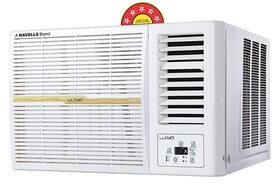
Also, you need to have a dedicated space in the Window. The cooling efficiency of Windows ACs is not that great, and no new technologies are being developed for Windows ACs nowadays.
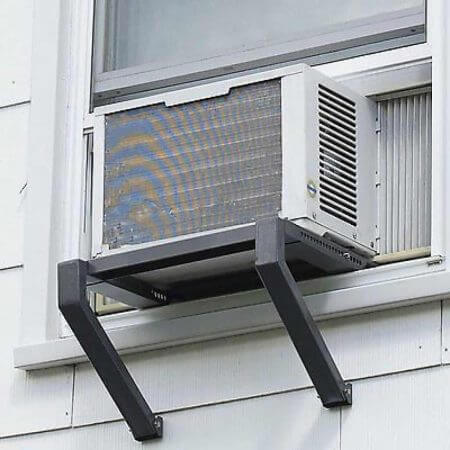
Split AC
Some rooms do not have any space in the windows to fit an AC. Some people prefer not to block the windows, and in that case, split AC is the best option.
Split AC means that the AC unit is split into two units. One unit needs to be fitted inside the room, and the other unit needs to be fitted outside the room.
The unit inside the room is called the Indoor Unit, and the one that is fitted outside is called the outdoor unit.

The indoor unit has the blower, evaporator, and other electronic parts, and the outdoor unit has the remaining parts like the compressor, condenser, etc. The indoor and outdoor unit is connected through a pipe drilled through the wall.
One of the main issues with the Split AC is that it completely messes up the look of a room if not fitted properly.
You need to make a drill to connect the indoor and outdoor unit, so sometimes the drilled holes look so ugly in an otherwise well-maintained room.
You may also need to hang a voltage stabilizer, which can make your room more cluttered. However, if you professionally fit everything, then everything should look good.
Portable AC
If you are a bachelor or staying in a rental apartment, then portable AC is a great option. It’s similar to a Windows AC where every component is in a single box. But you don’t need to fix it in a window or any wall.
Just keep the AC in any place in your house, but make sure that the back of the AC gets enough air. These portable ACs are similar to air coolers, but the only difference is that they can condition the air.

Portable ACs are not yet very popular in India, but with the kind of mobility they offer, I am sure that portable ACs will be in high demand in the coming years.
Difference Between Window AC and Split AC
Both types of ACs have some advantages and some disadvantages. It depends on individual preferences and requirements, which one they want to choose.
For example, some people may not like to drill through their wall to fit a split AC, but they have a provision in the window to fit a window AC. In that case, the window AC is a better option.
On the other hand, if someone cares about cooling efficiency and electricity bills, they may like to split the AC. However, a split AC costs way more than a window AC.
But buying an AC is a long-term investment, and everyone likes to buy the best AC.
What To Look For When Buying An Air Conditioner: AC Buying Guide
I would always suggest you go through the following things before making a purchase decision to know what you need and what you should buy.
If you buy an AC without having proper knowledge, then you may end up regretting it later. So here you go with the list of things you have to consider before you buy an AC.
1. Size Of The AC: The Tonnage
No, I am not talking about the physical length, width, or depth of an AC. Neither am I talking about the weight of the AC. What I meant by the size of the AC is the cooling capacity of the AC.
What Is The Tonnage Of An AC?
The cooling capacity of an AC is measured by Tonnage. It is the amount of heat the AC can remove. For example, 1 Ton AC, 1.5 Ton AC, 2 Ton AC, etc.
The measurement of heat is described as BTU ( British Thermal Unit). BTU is the amount of heat required to raise the temperature of one pound of water by 1℉
1 ton of AC can remove about 12000 BTU/ Hour. What that means is that if you buy a one-ton AC, it can remove 12000 BTU of heat energy per hour from your room. If it is two tons, then it can remove 24000 BTU / hour.
The more tonnage an AC has, the better it is in terms of cooling efficiency. So you need to choose the perfect size of AC to get the best cooling efficiency.
In simple words, A 1-ton AC can cool a room up to that extent, as if you kept 1 ton of ice in that room.
How do you choose the right tonnage for an AC?
How much tonnage AC is proper for you purely depends on your requirements and various other factors, as shown below.
Size of the room
We already know that an AC does not supply air, but it only conditions the air. If the room size is big, the heat will be higher, and the AC should be more powerful to remove that much heat.
The size of an AC is directly proportional to the size of the room. The higher the tonnage of an AC, the higher the AC’s heat removal capacity.
Often, people complain that their AC is not cooling the room sufficiently, but they never think about whether they bought the right size AC or not.
For example, if you buy a 1.5-ton AC, that may be good for a 12X12 room, but the same AC would not be sufficient for a 14X14 room.
Here is one calculator that you can use to figure out which size AC is the best for your room.
Advanced AC Tonnage Calculator
Location Of The AC
You need to fit the AC so that it gets enough atmospheric space to dissipate the heat. If you plan to use a Windows AC, make sure that there is at least 2-3 feet of space available behind the AC. Otherwise, your window AC may not cool the room properly.
If you plan to use a split AC, you have the flexibility to fit the outdoor unit anywhere you want. If you’re going to fix it on the outside wall, make sure that there is enough space for air circulation. If not, you can set the outdoor unit on the roof if it’s possible.
The city where you live
Well, that is something we always ignore. But it’s a fact that if you live in coastal areas like Chennai, Mumbai, or Kolkata, you need a higher tonnage AC than recommended.
The reason is simple. In coastal areas, the air gets too much moisture. Due to this, the heat-dissipating capacity of the condenser gets reduced. So you need a higher capacity AC for efficient cooling.
Also, when there is too much difference between the outside temperature and the inside temperature, the AC needs to do more work, and thus, a higher tonnage AC is required. For example, in Delhi, the difference between the outside temperature and the inside temperature is too high.
To explain the scenario, let’s say you want to keep your room temperature at 25°C. Assume that the outside temperature is 50°C. After doing all the calculations, you have bought a 1.5-ton AC, which is cooling your room perfectly.
But now, if the outside temperature is increased by 80°C. Do you feel that the same AC will work? NO. You need to buy a 2-ton AC ( For example) to get the same amount of cooling that you were getting before.
Type of room
You might be wondering how the type of room can affect the AC size. But yes, it does. For example, if you want to cool a bedroom, you may choose a lower tonnage AC, as the movement of people will be much less. You will open and shut doors and windows less frequently.
It does affect the amount of heat in the room. If there is less heat in the room, you need a lower-tonnage AC to cool the room.
On the other hand, if you want to fit an AC in the living room, you may need to buy a higher tonnage AC than recommended, as there will be frequent movement of people. Also, you may open and shut doors and windows frequently.
Number of people in the room
We, humans, also emit heat. So the number of people in the room affects the AC size. For example, if there are 5 people in the room, a 1.5-ton AC may cool it properly.
Now, in the same room, if you push 20 people, the same AC will not cool. So, choose an AC based on the number of people staying in the room at a given point in time.
2. Energy Efficiency
When we talk about efficiency, it is always relative. What that means is that we are trying to evaluate an AC performance relative to different parameters. For example, how much heat an AC can take out per unit of power consumption.
The efficiency of a machine is the output of the machine against a set input. If the output is more at a set input, then efficiency will also be higher.
BEE ( Bureau of Energy Efficiency) has made it mandatory for all AC manufacturers to show a few efficiency data and star ratings on their products to know what they are buying and how efficient their products are.
Here are those energy efficiency parameters that are in place in India.
- EER ( Energy Efficiency Ratio)
- SEER ( Seasonal Energy Efficiency Ratio)
- ISEER ( Indian Seasonal Energy Efficiency Ratio)
- CoP ( Coefficient Of Performance)
- Star Rating
EER ( Energy Efficiency Ratio)
The energy efficiency ratio is the ratio of the amount of heat energy that the AC takes off against the amount of power.
EER= Amount Of heat energy the AC takes off/ Amount Of power it consume=(BTU/Hr)/Watt
So, from the above formula, it is clear that the higher the EER value, the better the efficiency of the AC.
For calculating the ERR, BEE has instructed manufacturers to assume the outside temperature as 35°C, the inside temperature as 25°C, and the humidity as 50%
SEER ( Seasonal Energy Efficiency Ratio)
The efficiency of an AC largely depends on the amount of work the AC does. If the temperature difference between the indoors and outdoors is too much, then the AC needs to do more work, and thus the efficiency also gets reduced.
We all know that the temperature difference is very high during the summer, and that’s why AC is less efficient.
On the other hand, during the winter, AC will be more efficient as the temperature difference will be less.
EER does not consider this seasonal variation of AC efficiency. That is why the EER value may give a wrong perception of AC efficiency.
To solve this problem, SEER or Seasonal Energy Efficiency Ratio was introduced to get the correct efficiency information. Compared to EER, SEER just adds a factor to compensate for the seasonal efficiency fluctuation.
ISEER ( Indian Seasonal Energy Efficiency Ratio)
The concept of SEER and ISEER is the same. Only the term “Indian” was added to differentiate it from Indian weather.
The formula for calculating ISEER is the same as EER, which means that ISEER is the ratio of heat energy removed and the amount of power consumed. BEE uses different terms to explain this ratio, and here are those terms.

CSEC (Cooling Seasonal Energy Consumption): The Total amount of energy consumed by an AC when it is in an active mode of cooling operation
CSTL (Cooling Seasonal Total Load): Total amount of heat removed by the AC when the AC is in active cooling operation mode.
ISEER= CSTL/CSEC
The ISEER value printed on your AC box assumes that you will run the AC for 1600 hours per year. If you use the AC for more hours, then the efficiency may vary.
CoP (Coefficient Of Performance)
The coP is the ratio of the amount of cooling provided by an AC to the energy it consumes. So if the CoP is 1, then the AC will be 100% efficient.
We know that 1 KWH= 3412 BTU
1W= 3.412 BTU/Hr
Now let’s go to the formula of EER
EER= (BTU/hr)/ W= (BTU/Hr)/( 3.412 BTU/hr)= 3.412 CoP
So EER= 3.412 CoP
Star Rating
Till now, we have seen so many calculations and so many technical terms. As a general consumer, those terms will be of no use as they won’t understand all those things.
For this reason, the government has introduced a star rating system for refrigerators and air conditioners, which is easy for consumers to understand.
Star rating is related to the ISEER value of the AC unit. All ACs should have the ISEER value and star rating printed on the box as per government regulation. Here is the chart showing the AC star rating against the ISEER value range.

From this table, you might have noticed that the energy efficiency is different in window AC and Split AC, even if they have the same star rating.
The higher the star rating value, the better the AC is in terms of electricity consumption. So a 5-star rated AC will always consume less electricity than a 4-star rated AC
A few other terms are used in the energy efficiency label
Apart from ISEER and star ratings, you may also see some of the other terms on the energy label as shown below.

Cooling Capacity ( 100%)
This shows how much cooling the AC can offer when the machine is running at 100% load. Typically, the value will be the same as the amount of cooling an AC can offer based on the ISEER rating.
Cooling Capacity ( 50%)
This shows the amount of cooling that the AC can offer if the machine is running at 50% load. Usually, the cooling capacity drops to half of the value mentioned for a 100% load.
Electricity Consumption
It shows an approximate value of the number of kWh or the number of units of electricity the AC may consume per year. This value is based on the assumption that you are running the AC for 1600 hours per year.
Rated Cooling Capacity
This is the same as the cooling capacity (100%). This is just a different term used by different manufacturers.
Maximum Cooling Capacity
This is the maximum cooling an AC can give considering +/- tolerances. For example, a 2-ton AC can give about 2.02 or 1.98 tons of cooling capacity, considering +/- tolerances. Usually, the tolerance is +/- 5%.
Rated Power Input
This is the amount of power the AC will consume when the machine runs at 100% load. This is a critical value, and based on this, you can calculate your electricity consumption.
For example, the rated input for a 1.5-ton AC is 1500 W/Hr. Now we can calculate how many units of electricity the AC may consume if you run the AC for 8 hours a day with 100% load.
Total Power consumed per day =1500X8= 12000 W/Hr= 12000/1000 KWhr=1.2 KWhr= 1.2 Unit.
So your AC will consume about 1.2 units of electricity per day if you run it for 8 hours a day. This is just a sample calculation.
Half Power Input
This is the amount of power the AC will consume if it runs at 50% load
Maximum Power Input
This is the maximum power or electricity the AC will consume, considering a +/- tolerance. Usually, BEE allows about +/- 5% variations.
3. Electricity Consumption Of The AC
When you buy the best AC in India, you should also look for how much electricity the AC consumes. You may have bought a feature-rich AC, but if that consumes too much electricity, then the running cost will be very high.
To save from huge, huge electricity bills, always buy a 5-star AC if you want to use it for a long time. The cost of 5-star AC is more, but it is worth the investment if you plan to keep the AC for a long time.
The electricity consumption of AC depends on various factors. It can vary based on the different modes available in the AC. We will discuss this in this article.
How to conserve electricity with AC?
Here are a few tips that may be useful to save electricity when you are running the AC
- Always fix the AC where sufficient airflow is available
- Keep all doors and windows closed
- Follow the service manual to replace the refrigerant on time
- Always keep the blower clean
- Keep the AC vent dust-free
- Use power-saving mode if it’s available
- Keep fewer appliances in the room where the AC is fitted.
- Use the auto-clean function if it’s available.
Here are some common modes available in ACs that can help you save more electricity.
Fan Mode
In fan mode, the compressor is turned off. There are two ways to activate fan mode. One is manual mode, where you can use the AC like a fan by activating the fan mode.
The other one is automatic, where the AC will automatically activate the fan mode when the temperature reaches the threshold.
Cool mode
It’s the default mode of AC. In cool mode, ACs will consume the optimum amount of power, considering the temperature range is under the recommended value.
For example, a good temperature range is 24-27°C. If you keep your AC less than 20 degrees, then obviously, it will consume more electricity.
Turbo Mode
In Turbo Mode, the AC consumes the most power. So activate turbo Mode only when you need it. If you want instant cooling, then turbo Mode can help you cool up to 16-18 °C within a short time.
Dry Mode
Dry mode removes the moisture from the air. Dry Mode consumes more power. The reason is that AC is not meant to remove moisture ideally.
When you are asking AC to remove moisture, you are asking AC to do more work. More work means more power consumption.
Sleeping mode
If you activate the sleeping mode, the AC will increase the threshold temperature by .5 to 1 °C every hour until it is 3-5 °C more than what you have set.
For example, you set the temperature at 25°C, and then you set the sleeping mode. So after 2-3 hours, you may notice that the room temperature is 27-28 °C, although you set the temperature at 25 °C.
So this increase in temperature reduces the load on the AC and that saves electricity.
Power saving mode
It’s a long debate whether the power-saving mode saves power or it is just a marketing trick.
During power saving mode, the AC compressors turn off automatically when the desired temperature is reached. It turns itself on when the temperature is again more than the threshold.
One may feel that this frequent Start AND Stop of the compressor may reduce electricity consumption.
But it consumes more electricity. You can use an AC with a variable-speed compressor ( Inverter AC) to save more energy.
Factors that affect the electricity consumption of AC
Here are the following factors that influence the power consumption of an AC. These factors also affect the efficiency of the AC.
Location
If you stay in coastal areas where the air has a lot of heat and moisture, an AC needs to do more work to make your room cool. For that reason, your electricity consumption will be higher.
Number of people in the room
If more people are in the room where the AC is fitted, it will also consume more electricity. The reason is simple.
Humans emit heat energy, so if there are more people, more heat energy will be emitted, and AC needs to do more work. More work means more electricity consumption.
Paint the Color of the room
You must be wondering how the paint color can affect the electricity consumption of an AC. But surprisingly, it does.
You may not know that the black color can absorb more heat than the white color. That is why we wear white dresses during the summer. The same logic applies to AC also.
For example, if your room’s paint color is dark, it will absorb more heat from the atmosphere, and the AC needs to do more work to cool it down. It is always preferable to use a light color paint color when you want to fix your AC
Number of appliances in the room
More appliances mean more heat energy than every appliance emits. More heat energy means more work for the AC to cool it down and thus more electricity consumption.
4. Inverter AC vs Non Inverter AC
No, an Inverter AC won’t work when there is a power cut. This is what people think of when they hear about inverter AC. But that is completely wrong. Inverter AC does not work like a power inverter.
Before you understand what an inverter AC is and how it works, you need to understand how a non-inverter AC works and the main pain areas.
The concept of inverter AC or non-inverter lies in the compressor motor that helps refrigerants to increase the pressure and temperature in the compressor.
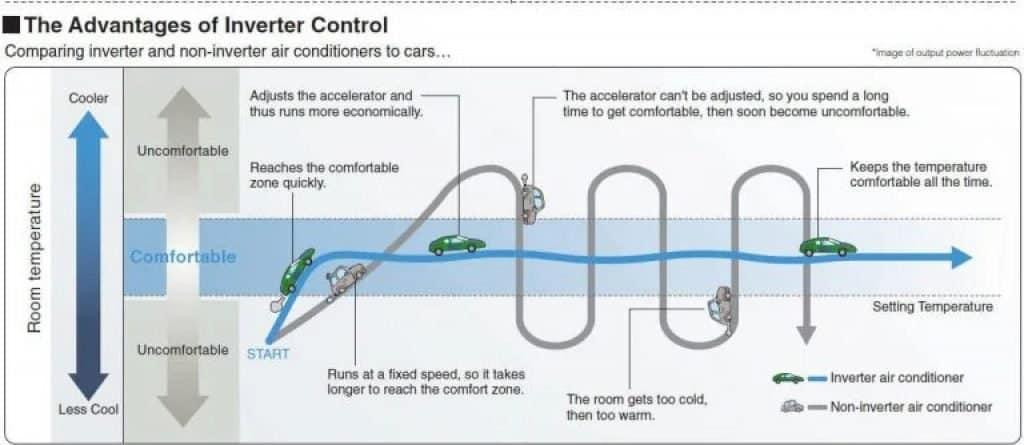
In traditional non-inverter AC, when you start the AC, the compressor motor turns on and runs at full speed. When the temperature goes below the threshold limit, the compressor motors turn off automatically.
Now whenever the temperature goes up, the compressor motor again starts running at full speed to cool down the room.
So, in a non-inverter AC, the compressor motor runs at full speed or no speed. There is no between.
Now let me tell you what the problem is with non-inverter compressor motors. Due to the frequent start and stop of the motor, it consumes more power.
Just like when you power on your mobile phone, it consumes 5-10% of the battery. Right?
Imagine you are restarting your mobile phone 50 times a day. Do you think that your phone will give a good battery backup? No. Right?
That’s when the Inverter AC or Inverter Compressor motor comes to the rescue. Inverter compressor motors are variable-speed motors.
When you start the AC, depending on the load, it may run at full speed or may run at a slower speed. When the temperature threshold is reached, the compressor does not turn off.
Instead, it runs at a very slow speed. So, in an AC inverter, the compressor never gets turned off until you turn it off.
No problem with the start and stop of the compressor again and again. And that is why inverter ACs offer better energy efficiency.
In a nutshell, a Non-Inverter AC uses a fixed-speed motor, and an Inverter AC uses a variable-speed motor
The next question that may come to your mind is whether the inverter AC has an inverter or a battery. No, it does not.
Inverter AC uses a variable-speed motor powered by a variable frequency drive ( VFD). VFD can control the speed of the motor by adjusting the input frequency and voltage.
Difference Between Inverter AC and Non-Inverter AC


| Aspects | Inverter AC | Non-Inverter AC |
|---|---|---|
| Compressor | Always On | Frequent start and stop |
| Power consumption | Low | High |
| Cooling performance | Stable | Uneven |
| Time to reach the desired temperature | Quick | Late |
| Compressor Motor type | Variable speed motor | Fixed Speed motor |
| Cost | Extremely Costly | Relatively cheap |
Power Consumption Of Inverter AC
Here is a chart showing the power consumption (kWh or Number Of units) of Inverter AC and Non-Inverter AC
| # Of Stars | .75 Ton | 1 Ton | 1.5 Ton | 2 Ton |
|---|---|---|---|---|
| 1 Star Non Inverter | 627 | 843 | 1246 | 1648 |
| 2 Star Non Inverter | 596 | 800 | 1184 | 1626 |
| 3 Star Inverter & Non Inverter | 542 | 747 | 1104 | 1448 |
| 4 Star Inverter | 464 | 645 | 945 | 1293 |
| 5 Star Inverter | 450 | 554 | 840 | 1113 |
5. Condenser Coil Material: Copper Vs Aluminium
Now you might have understood the importance of condensers in an air conditioner. The condenser does the job of dissipating heat into the atmosphere. That’s an important job. Is it not?
Did you notice black zig-zag tubes at the back of your refrigerator? Those are called condenser tubes. The refrigerant flows through those tubes and dissipates heat into the atmosphere.
There are two types of metal used to fabricate those pipes. One is copper, and the other is aluminum.
Copper is always the preferred choice because it offers better cooling efficiency and is more ductile to create those “U” shapes.
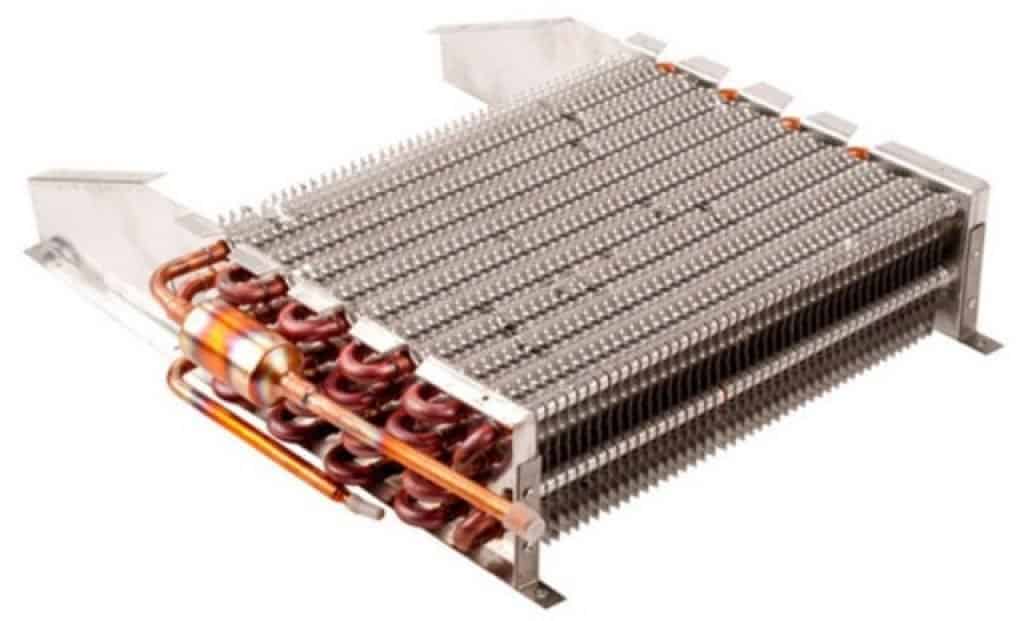
Aluminum is much cheaper than copper and is used in low-cost air conditioners. They suffer from the issue of corrosion, and aluminum condenser coils are not that cooling efficient. However, since aluminum is cheap, manufacturers use that for low-cost models.
One of the other issues with aluminum coils is that they are not easily repairable. If there is any leak in the aluminum condenser, then you may need to replace the whole coil.
However, in a copper condenser coil, you can use some joining methods like Soldering or Brazing to seal the leak temporarily. That saves a lot of money.
| Characteristics | Copper Coil | Aluminum |
|---|---|---|
| Cooling efficiency | Better | Less than copper |
| Design flexibility | Good | Poor, due to less ductility |
| Weight of condenser | More than aluminum | Aluminum coil weigh less than copper coils |
| Durability | More tough and durable | Not so durable |
| Reliability | More reliable | Less reliable |
| Maintenance | Easy to maintain | Tough to maintain |
| Repairs | Easy repairs | Need to replace the whole coil |
| Cost | Very High | Low |
Blue Fin Technology
Blue Fin Condenser or Blue coated condenser has a special anti-corrosive coating to protect condensers from the accumulation of salt, acid, and water droplets.
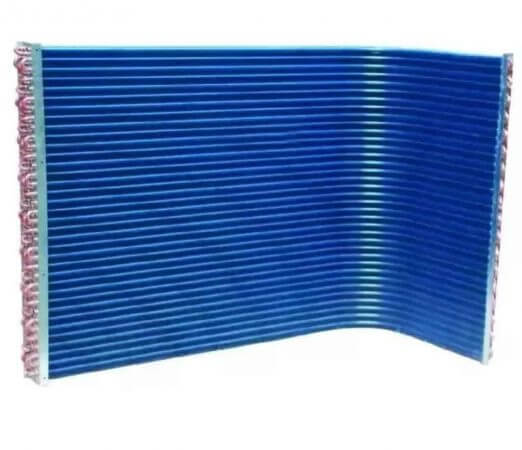
Blue Fin condensers not only save condenser coils from corrosion but also help achieve better cooling efficiency. The life of the condenser is also greatly improved.
6. Types Of Compressors: Reciprocating Vs Rotary Compressors
A compressor is the heart of a refrigerator. The performance of air conditioners largely depends on the type and size of the compressor.
The compressor increases the temperature and pressure of refrigerant gas so that it is ready to dissipate heat while it flows through the condenser.
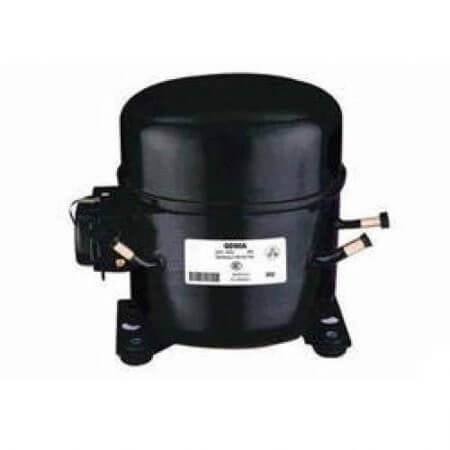
There are two types of compressors used in air conditioners and refrigerators.
- Reciprocating Compressor
- Rotating Compressor
Reciprocating Compressor
A reciprocating compressor uses a mechanism similar to an automobile engine. It has a cylinder and a piston. The piston pushes the refrigerant so that the temperature and pressure increase.

However, the problem with reciprocating compressors is that they create a lot of noise due to the number of moving parts in the compressors.
Rotary Compressor
Rotary compressors use rotor blades to suck the air. When the blades are rotating, they press the air as the air has to escape through narrow passages. This way, the pressure and temperature of the refrigerant are increased
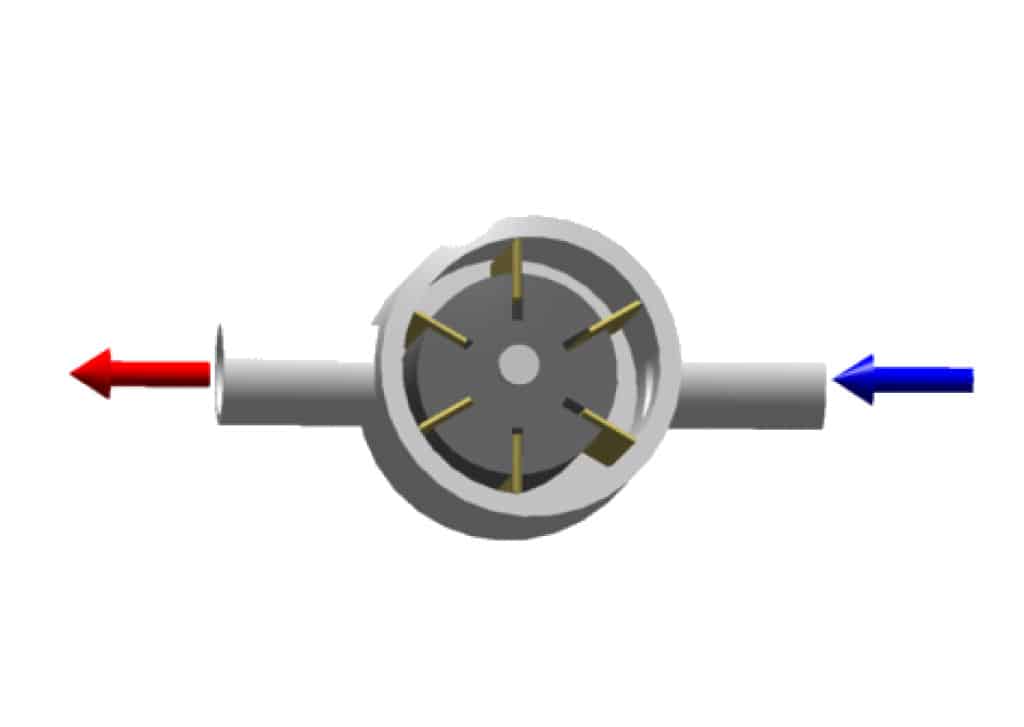
7. Types Of Coolant ( Refrigerant)
Refrigerant is the main substance that helps absorb the heat from inside the room and dissipate it into the atmosphere.
During the whole process, it changes from liquid to gas and then again from gas to liquid.
It also undergoes a change in pressure and temperature during the whole process. The quality and type of refrigerant decide the cooling efficiency of an air conditioner.
So, if you are in the mood to buy the Best AC in India, then you should also consider the type of refrigerant that is used in your AC
There are four main types of refrigerants used in air conditioners.
- Chloroflorocarbons (CFC)
- Hydrochlorofluorocarbons (HCFC)
- Hydrofluorocarbons (HFC)
- Hydrocarbons – (HC)
Chlorofluorocarbons -(CFC)
This is the first-ever refrigerant used in air conditioners. This refrigerant is commercially known as R12. R12 causes a serious threat to the ozone layer, and that is why it is no longer used in any refrigerators or air conditioners
Hydrochlorofluorocarbons (HCFC)
These refrigerants are commercially known as R22. R22 is better than R12 in terms of threat to the ozone layer, but there are still some concerns about the ozone layer. That is why R22 is phased out in many countries.
However, in India, manufacturers still use R22 in air conditioners. The Indian Government has already set a deadline to phase out R22 in the next 5-6 years.
So if you want to keep your AC for more than 5-6 years, then stay away from R22-based ACs
Hydrofluorocarbons (HFC)
Hydrofluorocarbons are commercially available under the names R410A, R32, and R134. Typically, these refrigerants do not cause any depletion of the ozone layer, and that’s why they are eco-friendly.
One of the main reasons that hydrofluorocarbons do not cause any harm to the ozone layer is the absence of chlorine.

Hydrocarbons – (HC)
Hydrocarbon-based refrigerants are the best available on the market. Commercially, they are available with the names R600, R600A, and R290.
In countries like the USA and the UK, there is pressure from governing agencies to use R600 in all refrigerators and air conditioners.
R600 comes under green refrigerants and does not pose any threat to the ozone layer. However, one of the biggest problems with R600 is that they are highly flammable.
It can easily catch fire if there is a leak. So extensive research and design are required for parts to use R600.
In India, you may see air conditioners with R290. But those are damn costly. R600-based air conditioners are still a few years away.
But I feel that we have some responsibility towards the environment and should always choose a refrigerant that is environmentally friendly.
Here is a list of refrigerant and their effect on Ozone Depletion Potential ( ODP) and Global Warming Potential (GWP)
| Refrigerant | Ozone Depletion Potential (ODP) | Global Warming Potential (GWP) |
|---|---|---|
| R600A | None | 3 |
| R290 | None | 3 |
| R32 | None | 675 |
| R134A | None | 1430 |
| R22 | Medium | 1810 |
| R410A | None | 2088 |
From the above list, it is clear that both R600A and R290 are good for the environment, and we should use those in our air conditioners in the future.
8. Dehumidification
Moisture in the air causes discomfort to us. Right? Currently, many ACs come with a feature called ” Dehumidification” that can remove moisture from the air and cool the air.
If you are staying in coastal areas like Mumbai, Kolkata, or Chennai, you should look for an AC with a dehumidifier option. It will cost a bit more, but that will also bring more comfort.
9. Noise Label
You should always check the noise level before you buy an AC. Split ACs are good at the noise level. But again, some cheap Split ACs make a lot of noise.
Not only does the noise create noise pollution, but it also creates discomfort for you. When you are spending so much money buying an AC, why can’t you check the noise level for your comfort and that of your family?
10. Brand Value And After-Sales Service
When you are buying the Best AC In India, you should also check if it has a brand value or not. Also, you need to check for after-sales service. After all, AC is a machine, and every machine is prone to breakdown.
Some companies in India make very good air conditioners with a lot of advanced features. But when you go for repairs, their actual faces come into the picture. So you should always consider these aspects.
Here are some of the Best AC brands / Best AC companies in India
Best AC Brand / Best AC Company In India
Although numerous companies in India make ACs, you should go with the brand that has a good presence in India, has good after-sales service, and makes some good products. Based on that, here are some of the best AC brands in India.
LG
No doubt why LG is the best AC brand in India. Not only AC but also in the home appliance market, they have a good hold.
One of the areas in which they always excel is innovation. You will always see some innovative features in their ACs. Other brands follow LG. So if you buy an LG AC, I can confidently say that you won’t be disappointed.
One of the downsides of LG is that their ACs are a bit costly. However, the features LG AC offers justify the price tag. On top of that, LG ACs are aesthetically good too.
Voltas
Voltas has been in the industry for a long time. It’s a collaboration between Tata and Volkart Brothers. Voltas ACs are known for great reliability and excellent cooling efficiency.
One of the best parts about Voltas is that its product portfolio is only in HVAC. What that means is that it only sells HVAC products. That is why they are experts in that field and spend too much money on research and development.
Carrier
Carrier is a 100-year-old American company that manufactures HVAC products. Their products are extremely reliable and come with exciting new features.
Daikin
Daikin is a Japanese company that has a good foothold in India. Although they don’t have any tie-ups with any Indian company, they make some good ACs.
You know that Japanese manufacturers are perfect at maintaining quality. For example, Toyota, Nissan, and Subaru.
All are Japanese brands and have a global brand value. So you can expect good quality AC if you buy from the Daikin brand.
Blue Star
Blue Star is another great company that specializes in manufacturing air conditioners. They also launch new technologies in their air conditioners, but the only downside is that Blue Star ACs are a bit costly.
Hitachi
Like Daikin, Hitachi is also a Japanese company that manufactures ACs in India. Although their main business is in consumer electronics, recently, they have been more focused on appliances like air conditioners. Hitachi ACs are full of new features and are reliable too.
Whirlpool
Whirlpool is an American brand, and in fact, they are the number one home appliances brand in the USA. India also comes under the top 5 appliance manufacturers.
The good part about Whirlpool is that their appliances are relatively cheap to buy, and they make products considering the common people’s mindset.
For example, they focus more on energy saving than new features. As a common person, you want a lower electricity bill rather than hi-fi features. Right?
Must-Have Features You Should Ask For In An AC
When we buy the Best Air AC in India, it is necessary to have some essential or must-have features apart from whatever is already mentioned in this article. Here are a few of those features that you can look for in the best AC in India.
Anti-Bacterial Filter – This Anti-Bacterial Filter can filter out dust, pollen, bacteria, etc., and give you pure and fresh air
Dehumidifier – This dehumidifier feature reduces the excess moisture in the air on rainy days. A must-have feature if you are staying in coastal areas.
Heating– Although a heater can not be considered a must-have feature considering Indian weather, in places like Himachal, Sikkim, or such areas where the cold is too much, you may need a heater in your AC.
Copper Coils – The AC condenser uses coils to cool the air. Copper is more popular in the AC market than Coils because Copper has a longer life than Aluminum, Copper cools the air quickly, and Copper coils are easy to maintain.
Auto Clean Function – Air has moisture. If it accumulates for a long time, it can create corrosion on the metal parts of the AC. Look for an auto-clean function in ACs that cleans the moisture automatically.
Swing – Actually, ACs that have multi-feature swings will be able to vent cool air in every corner of the room. With these features, the room will cool quickly
Timers – While purchasing the Best AC in India, also keep in mind that it has timers. Actually, with the help of timer features, you can turn the AC on and off automatically at the time you set it. It reduces power consumption.
Coolant Leak Detection- This is an essential feature that warns us if there is a leak of refrigerant in your AC. A leak can affect the cooling efficiency of your AC, and it can even cause a fire.
Bluetooth / Wi-Fi Enabled Remote – Traditional remote works on an infrared signal, and you need to be close to operate it.
But with a Bluetooth remote, you can operate the AC from 10-15 meters distance. With a Wi-Fi remote, you can operate the AC anywhere where the same wi-fi network signal exists.
What Is Remotely Accessed AC
Due to New Technologies, Remotely Accessible Air conditioners in India have become a new revolution in the market. You can control those ACs through your Smartphone.
For example, if you are coming home from the Office and want your room to be cool, then just a single tap on your smartphone, and your AC is all set to run.
And as soon as you get home, your room will be completely cool. Both your smartphone and AC should be connected to the internet to enable these types of features. These ACs have smart sensors and electronic devices to recognize those commands.
Do you know that in the USA, some ACs recognize Alexa and Siri and work through voice commands
Voltage Stabilizer In AC
It is essential to have a voltage stabilizer with the Best AC in India. Nowadays, many air conditioners in India have built-in voltage stabilizers. If not, get a voltage stabilizer considering the voltage fluctuation in India.
If your Best AC in India is 0.5–0.8 tons, then a 2KVA stabilizer will be perfect. A 3KVA stabilizer is good for AC of 1.0 tons to 1.2 tons, 4KVA for AC of 1.2 to 1.6 tons, 5KVA for 2.0 to 2.5 ton AC, and 6KVA for AC over 3-ton capacity.
Maintenance and Care Of AC
You should take special care and maintenance of your AC so that it lasts long and gives you perfect cooling.
You should also take special precautions while installing ACs so that you don’t fall into any accidents. Always call a professional instead of doing it yourself.
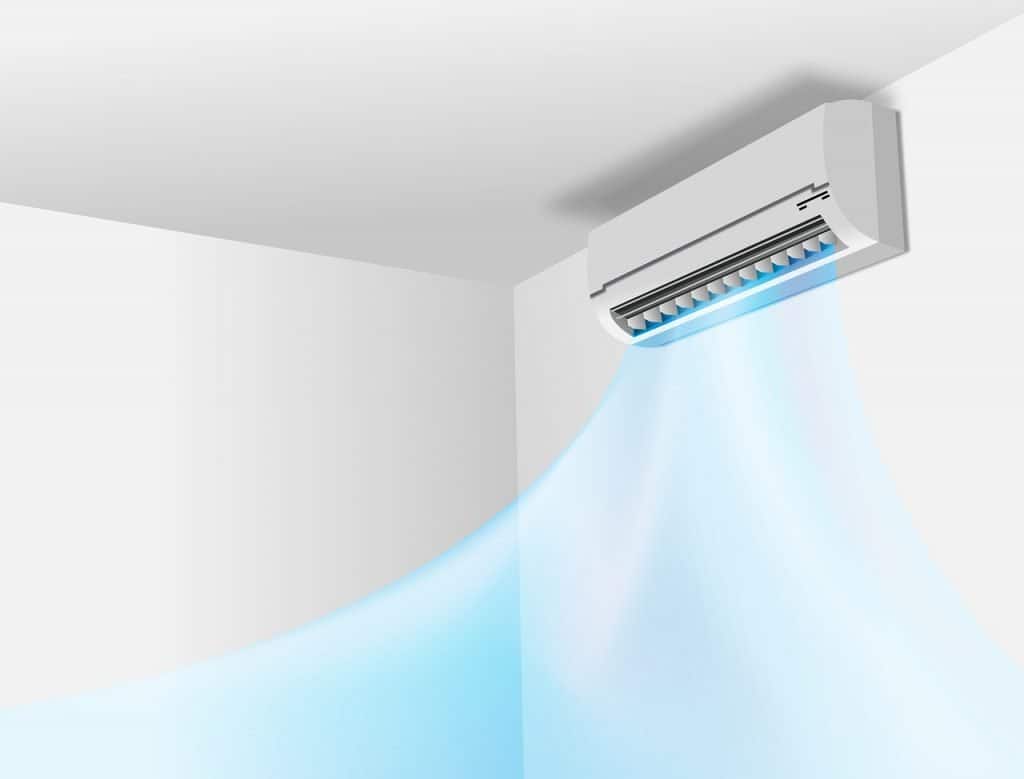
Air Conditioner Installation Tips
Always select the right place for AC installation where there is sufficient airflow and is easily reachable. In case of repair, technicians should be able to reach the AC.
It’s important to put the unit (or outdoor unit for split air conditioners) in a shaded spot. The North or south side of the home is better for installation because it prevents direct sunlight from hitting the air conditioning system.
Don’t install the outdoor unit too far from the indoor unit. A 2-3 meter distance is fine. But more than that is not recommended.
Air Conditioner Maintenance Tips
- Make sure that you clean the air conditioning filters before the beginning of summer. Dusty filters impact the inflow of air into the air conditioning, thereby making it work harder (consuming more electricity).
- Change the refrigerant before every summer, or follow the manufacturer’s instructions on when to change the refrigerant
- Check the air conditioning settings and confirm that the fresh air vent is closed. A ‘Fresh Air’ vent is employed to bring the air from the outside into the room. But as air conditioning works by cooling indoor air, opening the ‘fresh air’ vent will get more hot air from outside into the space, and therefore the condenser will need to work harder to chill it.
- Lights, computers, televisions, and every other appliance radiate heat. Confirm that these devices are packed up when not in use, or else they will increase the AC load. Actually, incandescent lights (old bulbs) radiate tons of warmth and may increase the units consumed by air conditioners.
- Maintain the right insulation of the space where air conditioning is installed for effective cooling
- Keep air conditioning at an ideal temperature of 24-25°C for the correct quantity of cooling and energy saving.
- Don’t place lights, computers, televisions, and other light-producing devices near the air conditioning thermostat, because it will impact the proper functioning of the thermostat and thereby make the air conditioning condenser work longer and consume more electricity.
- If you’ve got an ancient air conditioning unit that regularly needs repair, it’s better to replace it with an energy-efficient BEE star-rated best AC in India. It’ll be cheaper to shop for replacement air conditioning than to repair and maintain old air conditioning that consumes tons of electricity.
Maintaining and operating the best AC in India can save tons of electricity and may help you reduce tons of your electricity bills. So do confirm that you get your Best Air Conditioner in India in the right condition before next summer.
Tips for Efficient Use of Best AC in India
- Make the room air-resistant where the AC is installed.
- Do not lower the room temperature below 21 degrees.
- Use AC in energy-saving mode.
- Keep the windows and doors closed.
- Do not use a 1-ton AC in rooms larger than 120 SFT
- Keep both units at a distance determined by the company.
- Choose the AC according to the size of the room.
- Always do the servicing of your AC on time
Conclusion: AC Buying Guide
We hope that this list of the best ACs in India will help you find the best air conditioner. The air conditioner buying guide might have given you enough knowledge so that you can make an informed buying decision.
However, if you still have any questions or queries, we are just a comment away. Just pen down your questions in the comment section, and we will try to resolve your query.
FAQ | AC Buying Guide
What Is a Dual Inverter AC?
Dual Inverter AC uses similar technology to any regular Inverter AC, but it is more refined and offers better cooling efficiency. Dual Inverter AC produces less noise too.
The term ” Dual ” signifies that the dual Inverter AC is two times more energy-efficient than a single inverter AC
Which brand is the best for AC In India
If you are bothered about new technologies and features, then LG is the best. But if you are looking for reliable and cooling-efficient ACs, then brands like Blue Star, Carrier, and Daikin are way better.
However, before buying any AC, look for service availability in your area. Some brands may be good, but they have service centers only in big cities.
What is bluefin and goldfin technology?
Both bluefin and goldfin technology use a special type of epoxy coating on top of the condenser coil. Dust, acid, or water particles do not accumulate on the surface.
It reduces the chances of corrosion and enhances the cooling efficiency and longevity of condenser coils.
What is a dehumidifier in AC?
The dehumidifier function removes moisture from the air. Coastal areas like Chennai, Mumbai, and Kolkata have a lot of moisture content in the air. That causes some comfort issues.
Some ACs come with a dehumidifier function that removes the moisture with the touch of a button on the AC.
Does it make sense to buy an AC with an aluminum condenser?
Yes, it makes sense if it comes with some anti-corrosion coating. It also depends on how long you want to keep your AC.
If you want to keep your AC for just a few years, it does not make sense to invest in a copper condenser-based AC.
If your stay has less moisture throughout the year, you can also go ahead with an aluminum condenser.
But again, nowadays the cost difference between aluminum condenser-based AC and copper condenser-based AC is very low. So copper condenser makes more sense.
Which condenser is better for coastal areas?
The copper-based condenser is best for coastal areas. There are a couple of reasons for that.
Cooper does not get corroded easily
The copper condenser is more cooling-efficient
The copper condenser is more energy-efficient
What is the mosquito-away technology in some ACs
This is a great feature that LG first launched. No, it does not kill mosquitoes, nor does it use any chemicals.
Mosquito away technology works on the principle that the AC emits some ultrasonic waves that render the mosquito’s ability to detect CO2 exhaled by a human, become inactive, and fly away.
What is an Inverter AC?
Inverter ACs use a variable-speed compressor motor, unlike non-inverter ACs that use a fixed-speed motor. The inverter AC compressor does not shut down when the temperature threshold is reached.
Instead, it runs at a very slow speed. Since the compressor can adjust the speed based on the load, unlike other compressors that always run at full speed, inverter compressors are more energy efficient.
What are R600 Refrigerants
R600 is a kind of green refrigerant under the hydrocarbon family. R600 has zero effect on ozone layer depletion and negligible effect on global warming potential. However, the R600 is highly flammable and catches fire if there is a leak.
Do I need a stabilizer for the AC?
The answer is yes if your AC does not come with an inbuilt voltage stabilizer or your area has frequent voltage fluctuations. Otherwise, there is no need.
How many times should the AC be serviced?
Usually, once a year should be enough. But if there is a leak or you feel that the AC is not cooling properly, you can get it serviced.
When should we change the refrigerant?
Once a year, most manufacturers recommend, but it depends on the usage. If you use the AC more, you may need to replace the refrigerant earlier than what the manufacturers recommend.
How can I save energy while using an AC?
Keep all doors and windows closed while using the AC
Keep all other appliances out of the room
Use the AC between 22 and 27 degrees centigrade
Always clean air filters regularly.
Service your AC and replace refrigerants on time.
Use a light paint color in the room that has the AC
Don’t use turbo Mode unless it is required.
How do you calculate an approximate electricity bill for running an AC?
Please look into the rated power input at 100% load on your AC box.
For example, if the rated input for a 1.5-ton AC is 1500 W/Hr, we can calculate how many units of electricity the AC may consume if you run the AC for 8 hours a day with 100% load.
Total Power consumed per day =1500X8= 12000 W/Hr= 12000/1000 KWhr=1.2 KWhr= 1.2 Unit.
Why is water leaking from the AC, and how can it be fixed?
There could be a couple of reasons, as mentioned below.
1. Clogged condensate drain line
2. Damaged/rusted drain pan
3. Broken condensate pump
4. Dirty Air Filter
5. Low refrigerant
Why is my AC generating too much noise?
It may be due to the improper installation of the AC, or it could be due to a bad compressor. Please check the error code if it is displayed.
How long does an air conditioner last?
10 years is a sweet spot. After that, you may notice some issues no matter what brand you choose.
But with the way technology is evolving nowadays, you may feel that your AC is outdated even after 5 years.